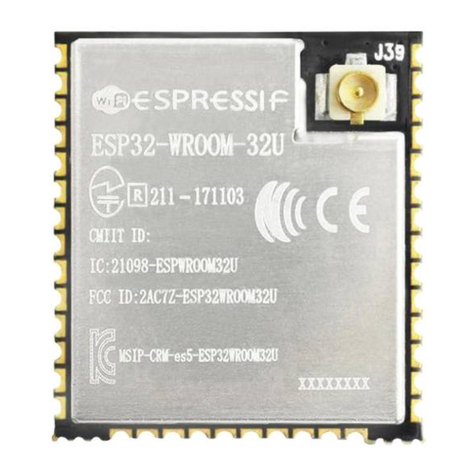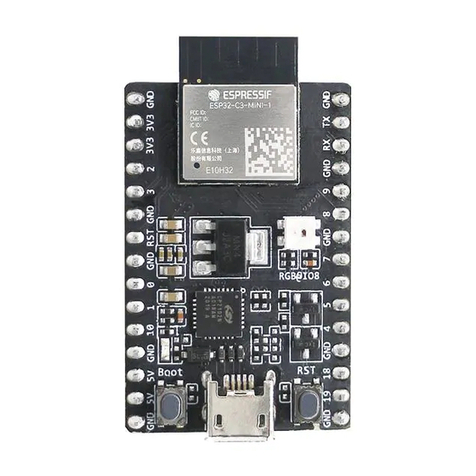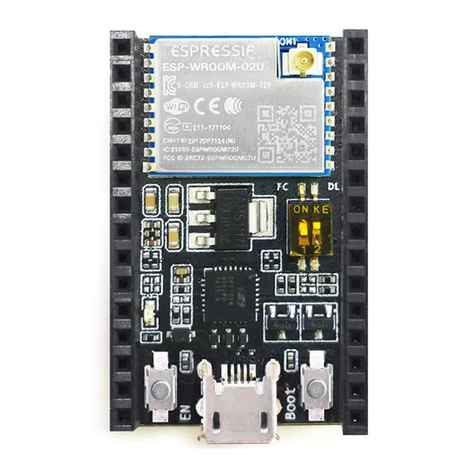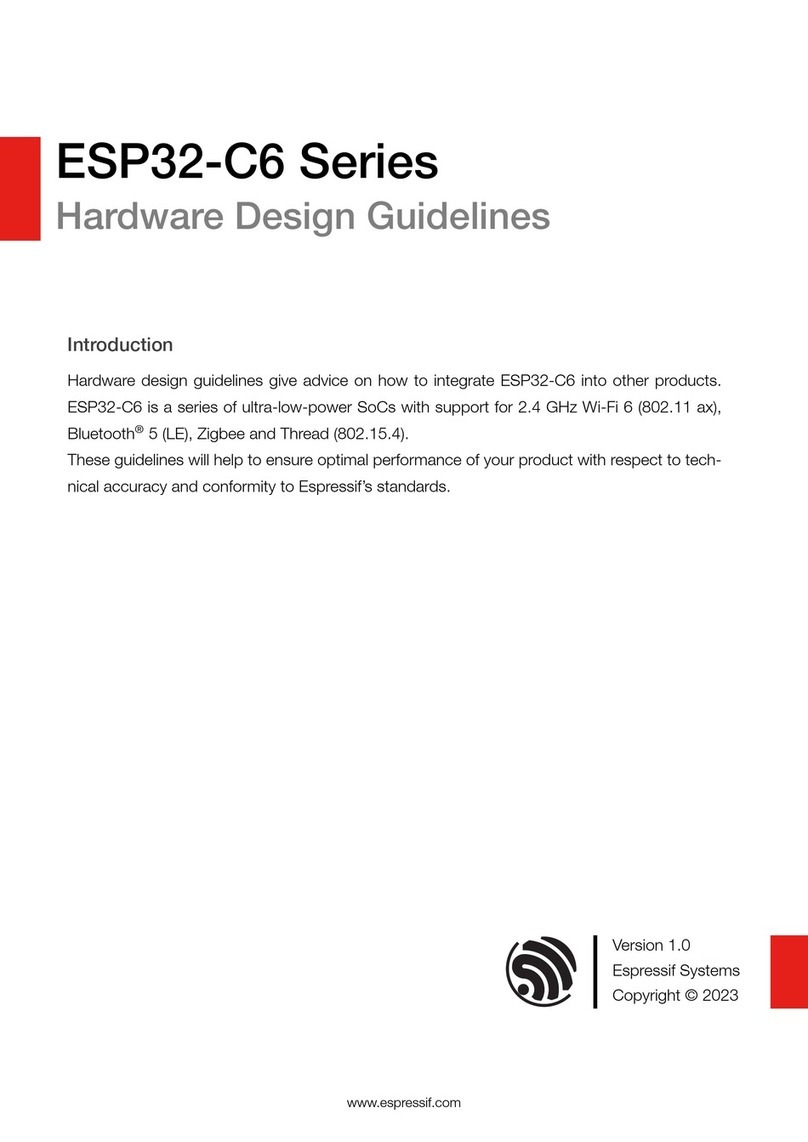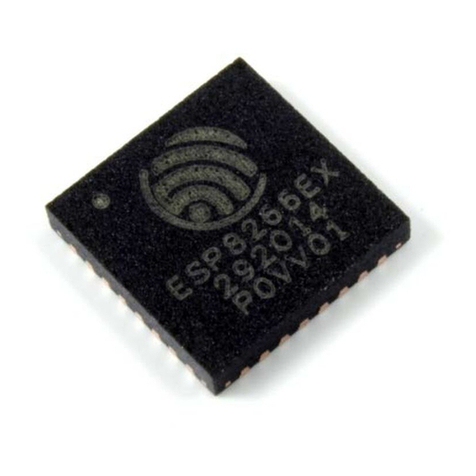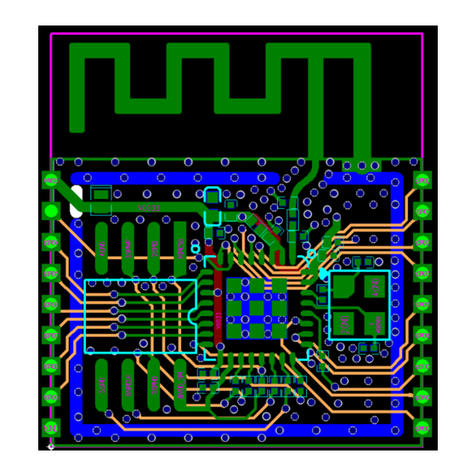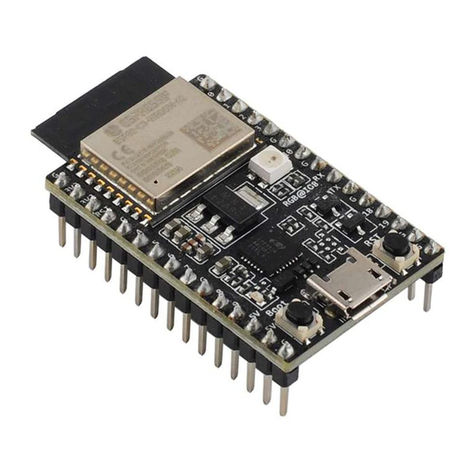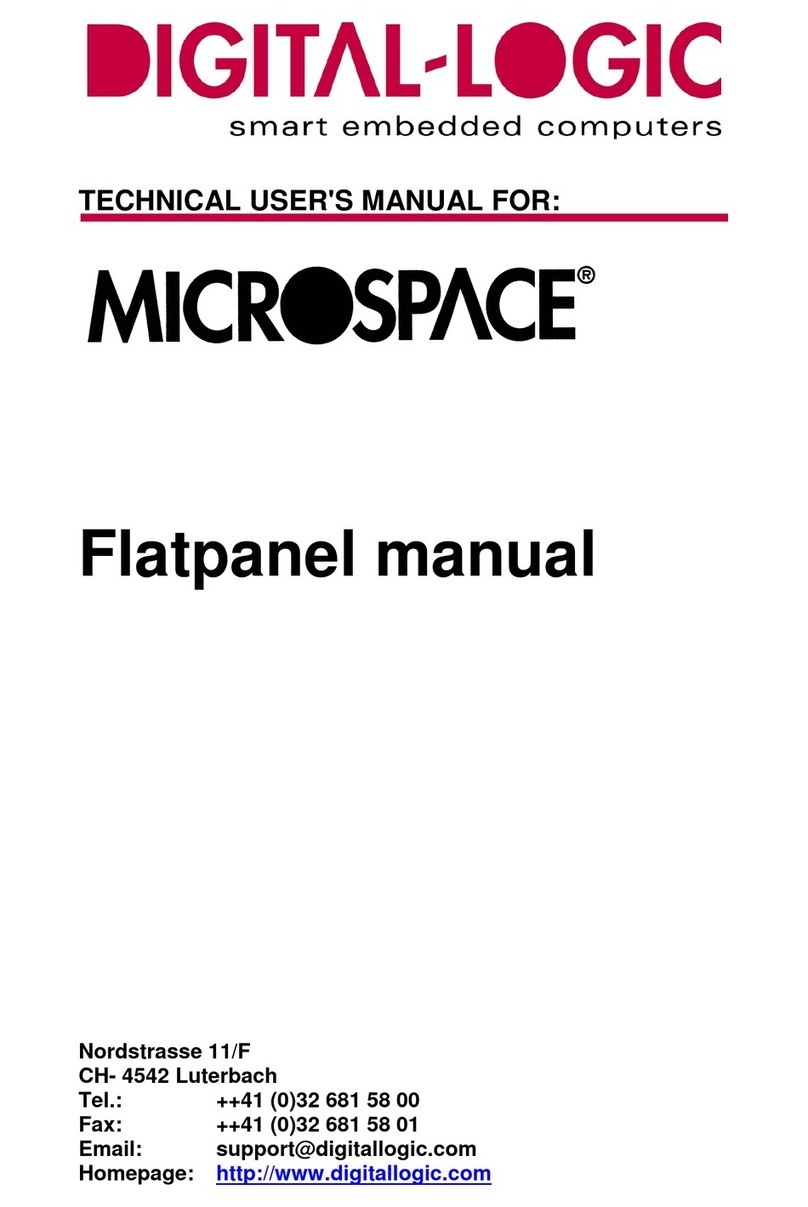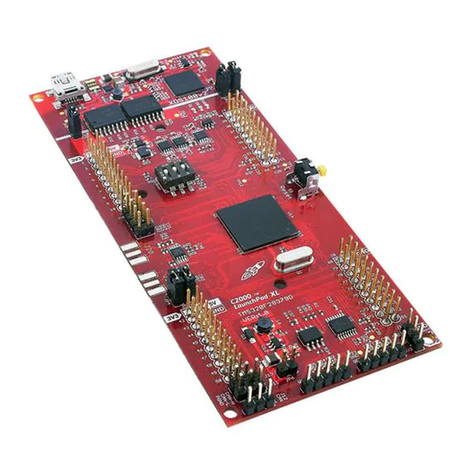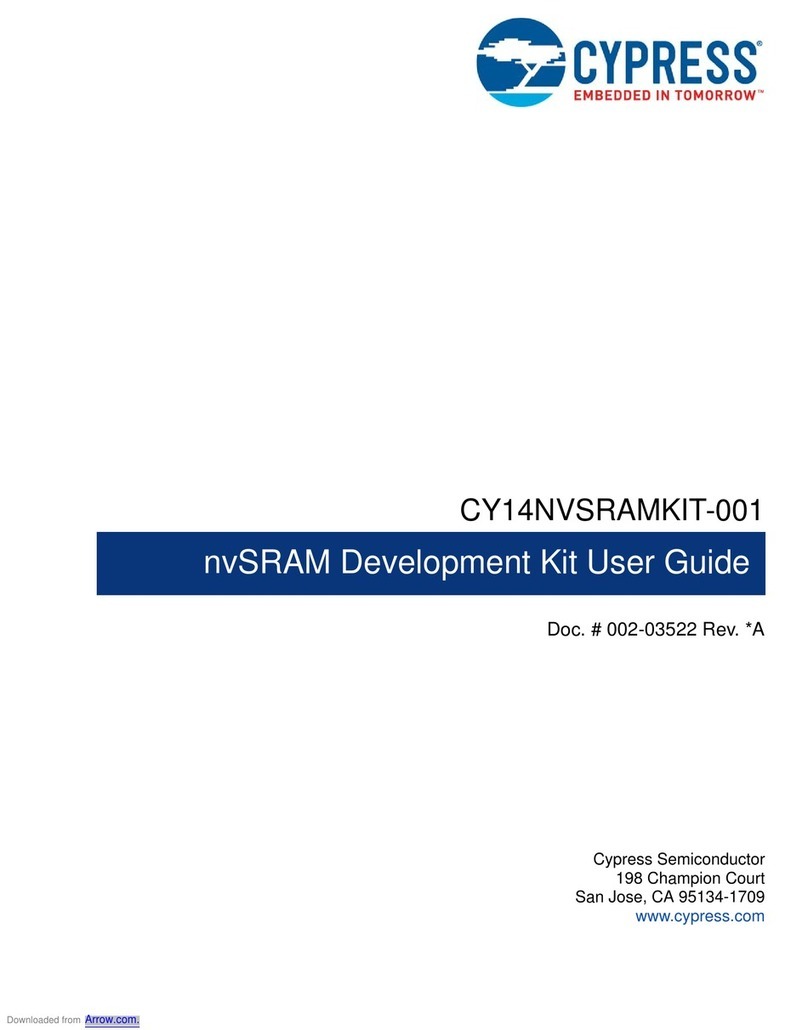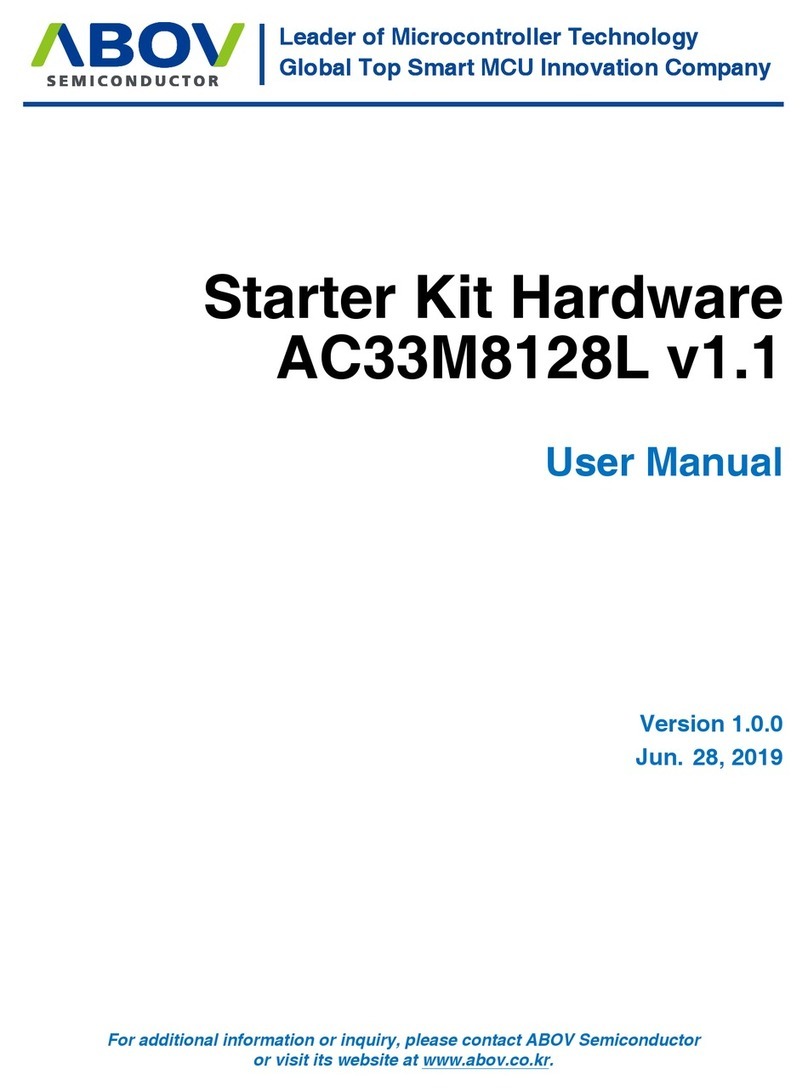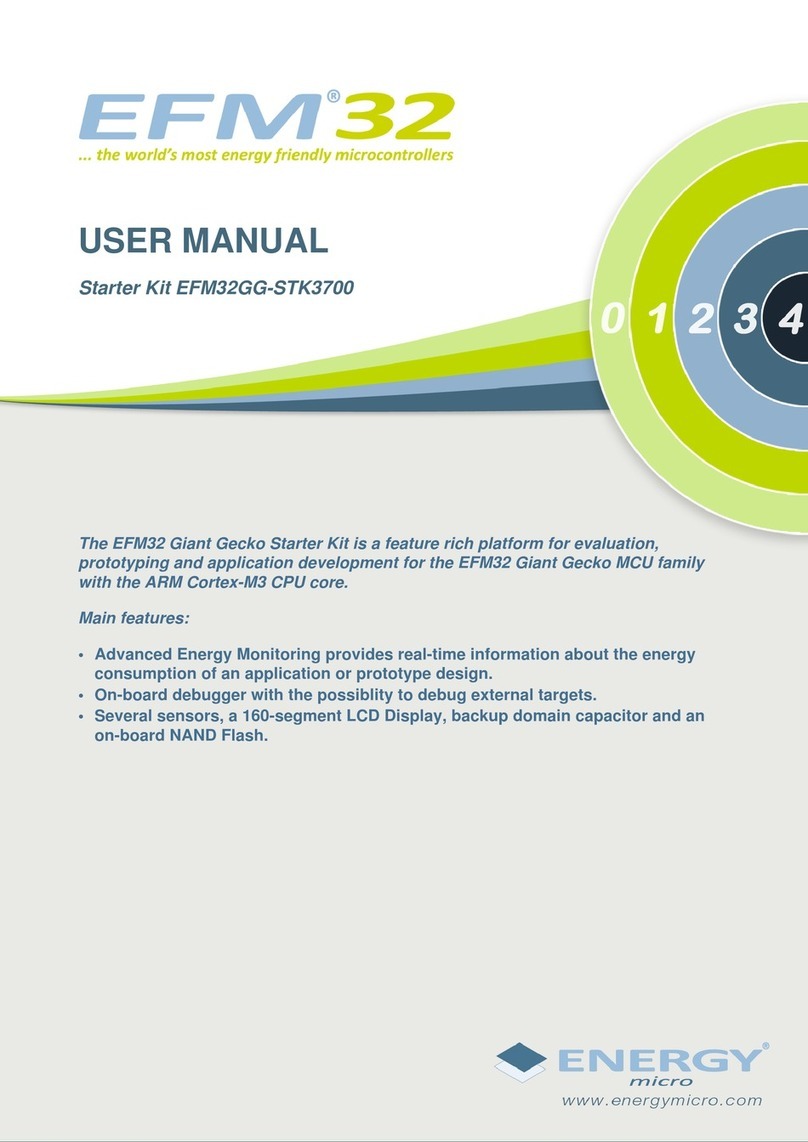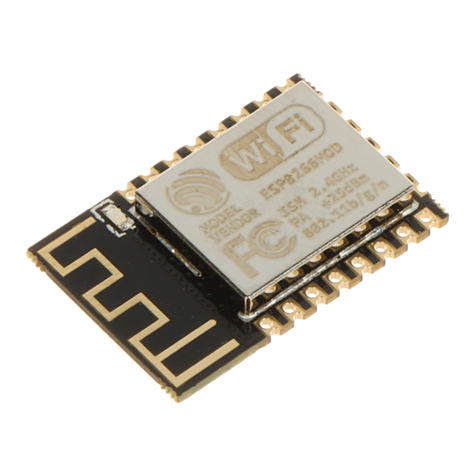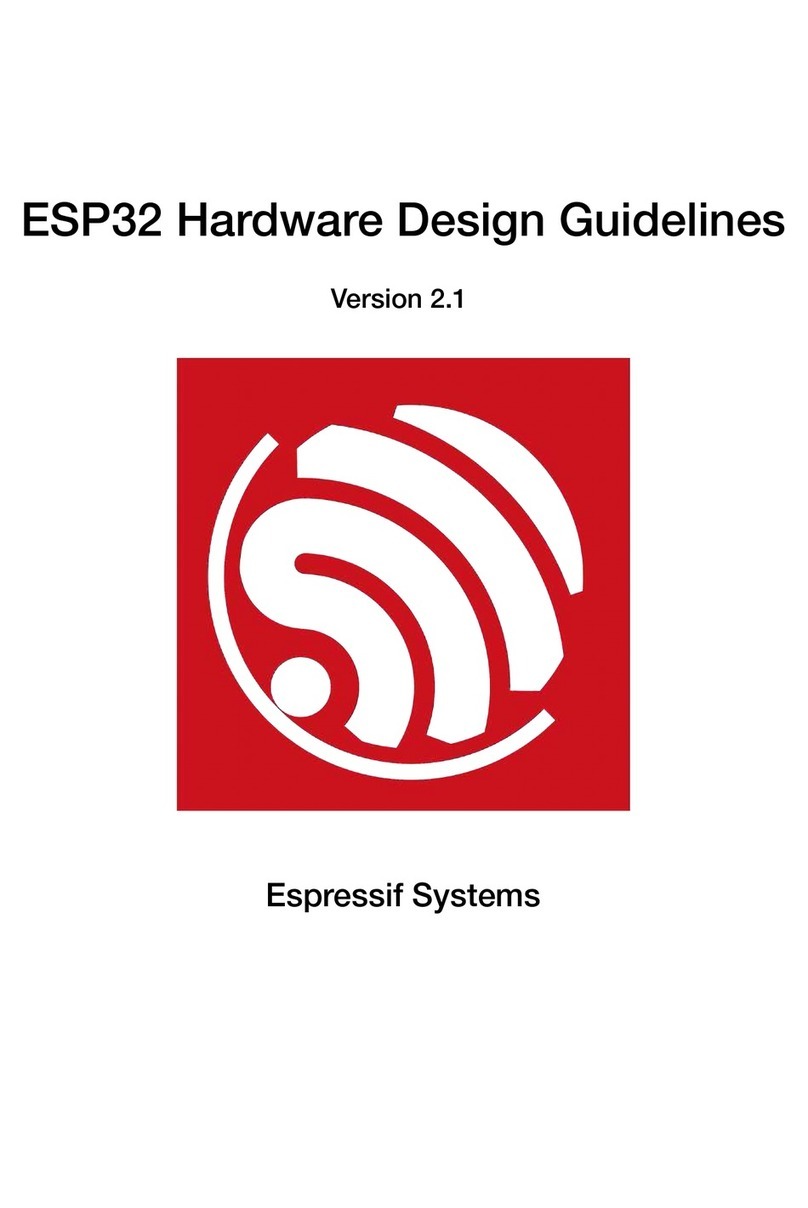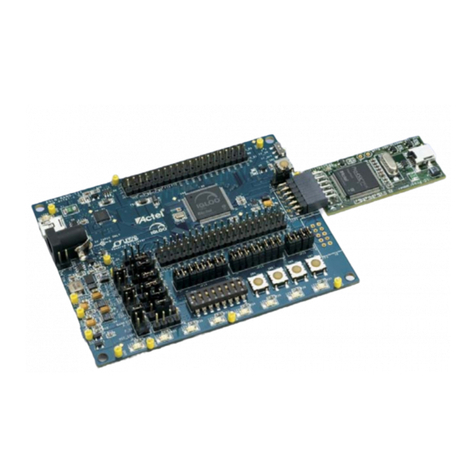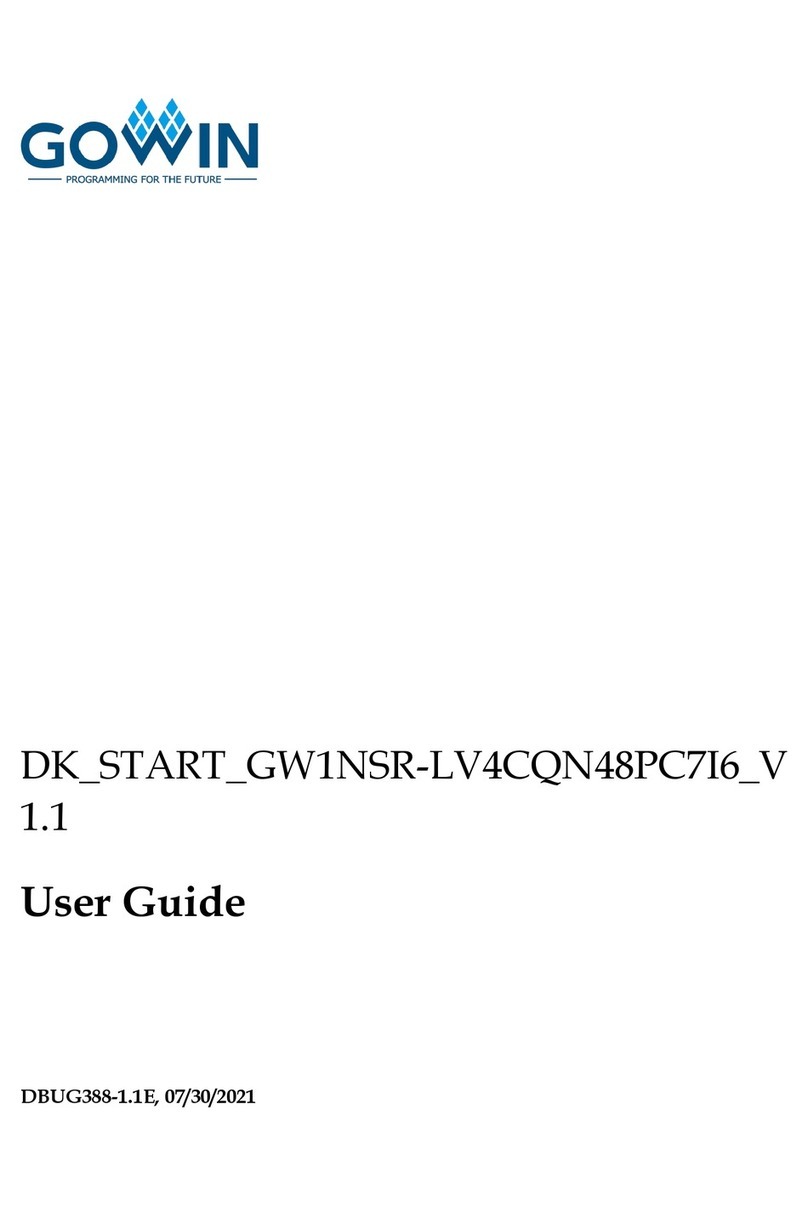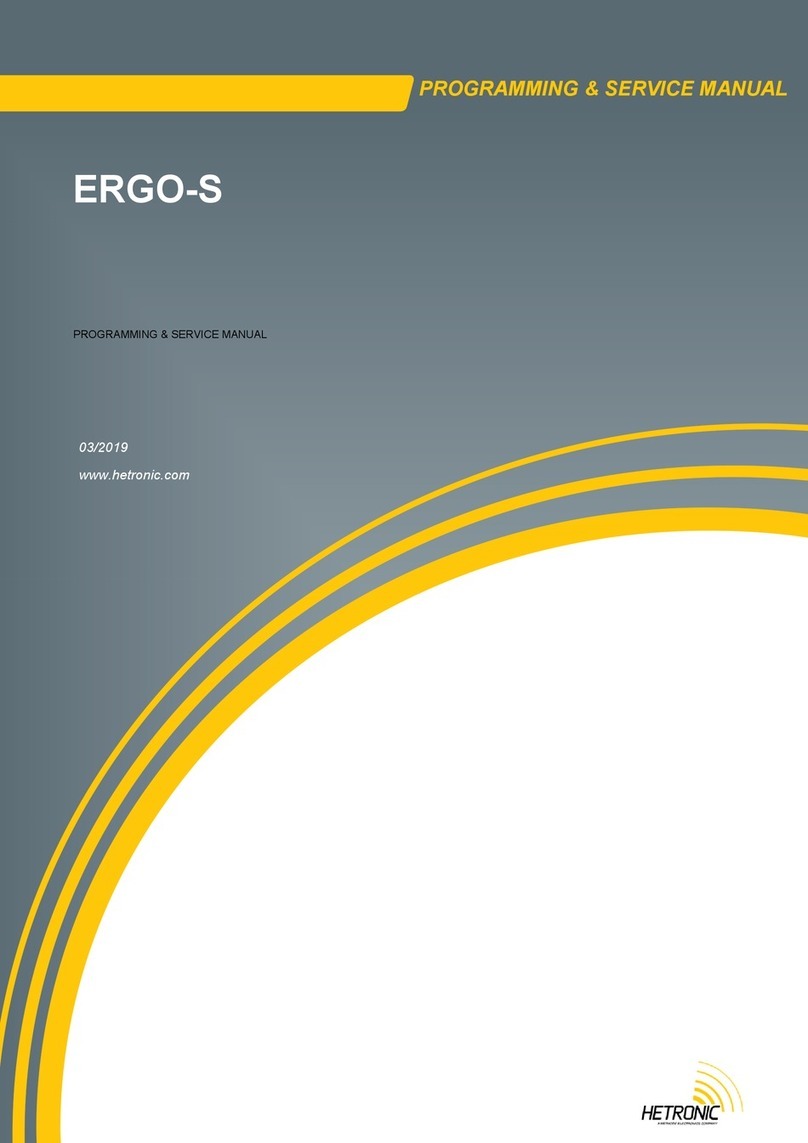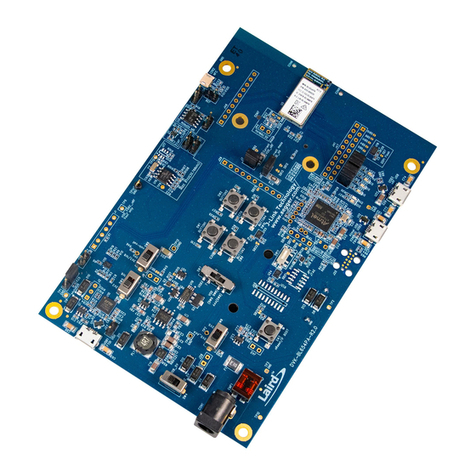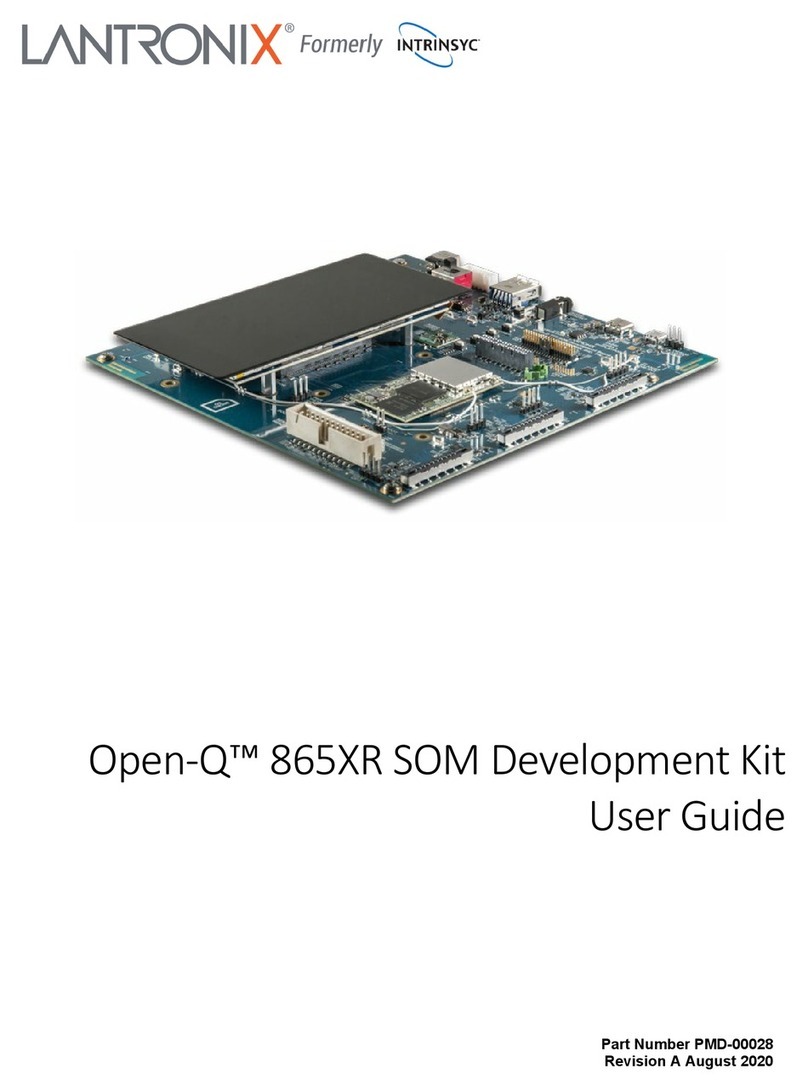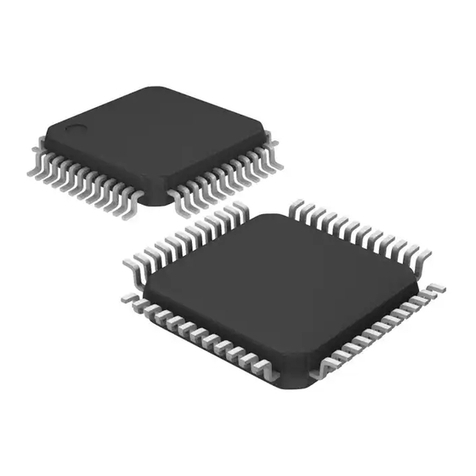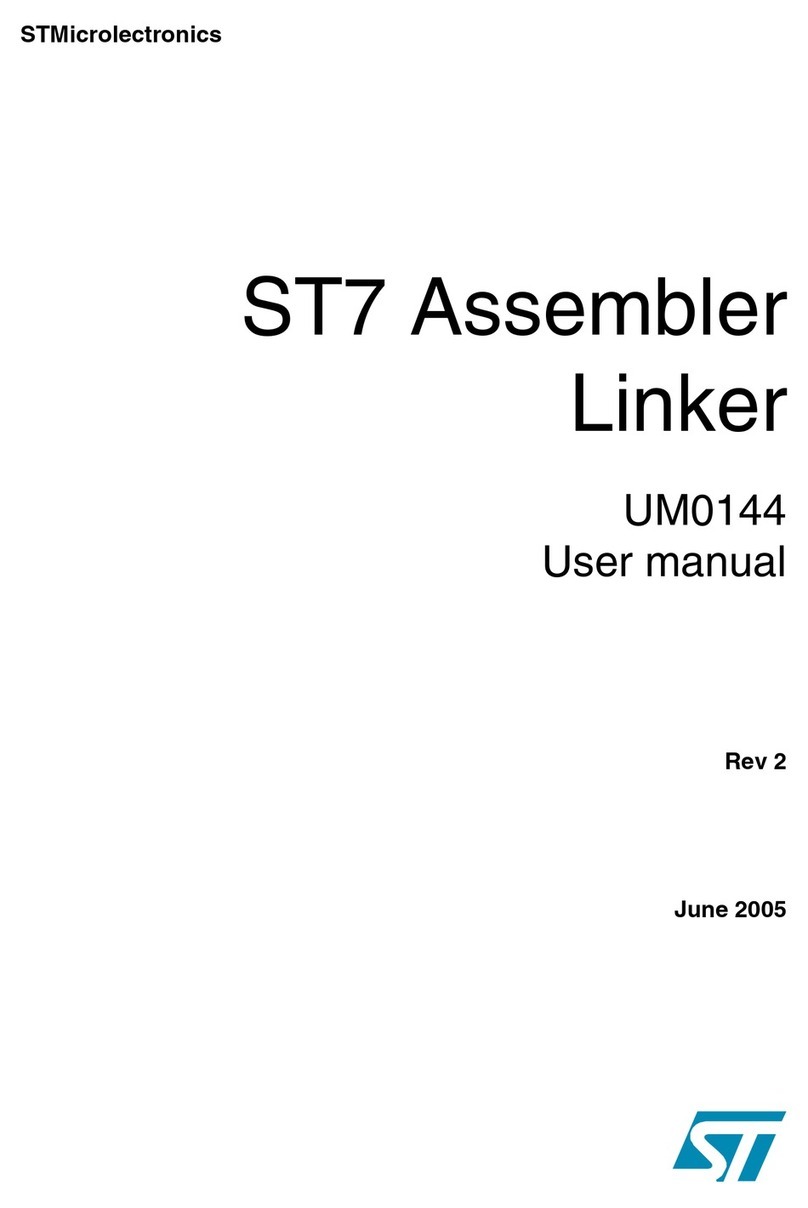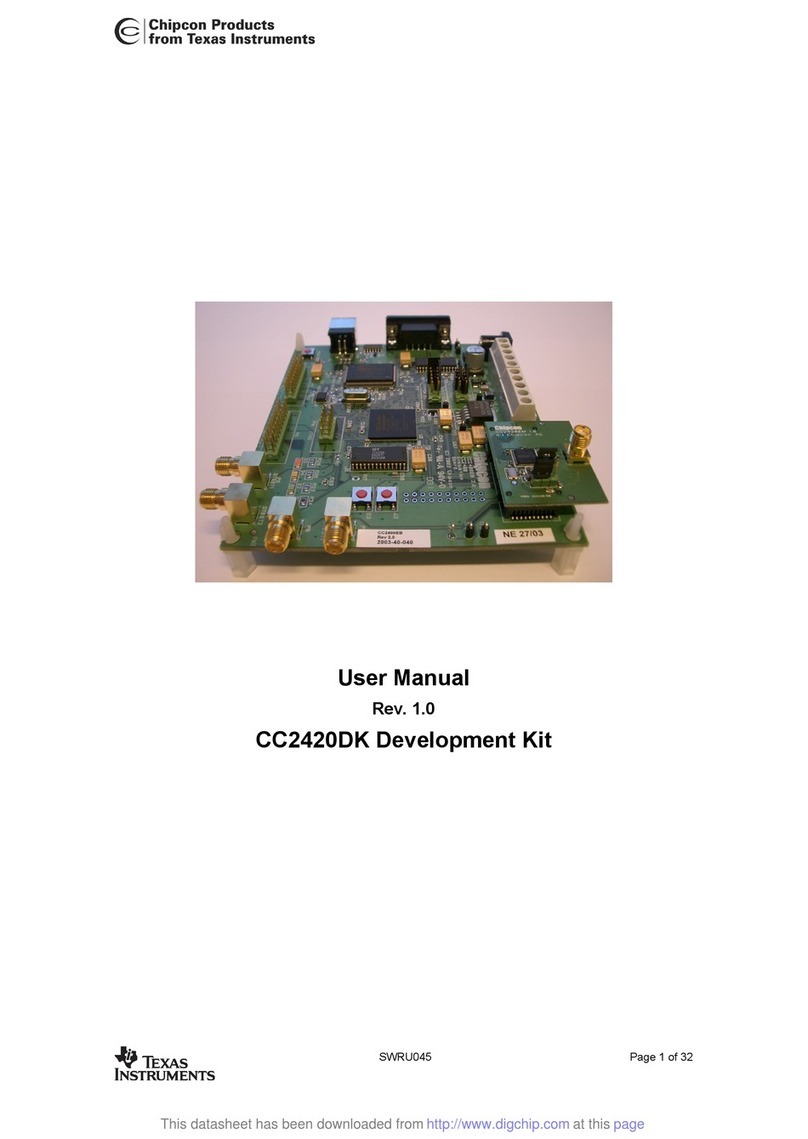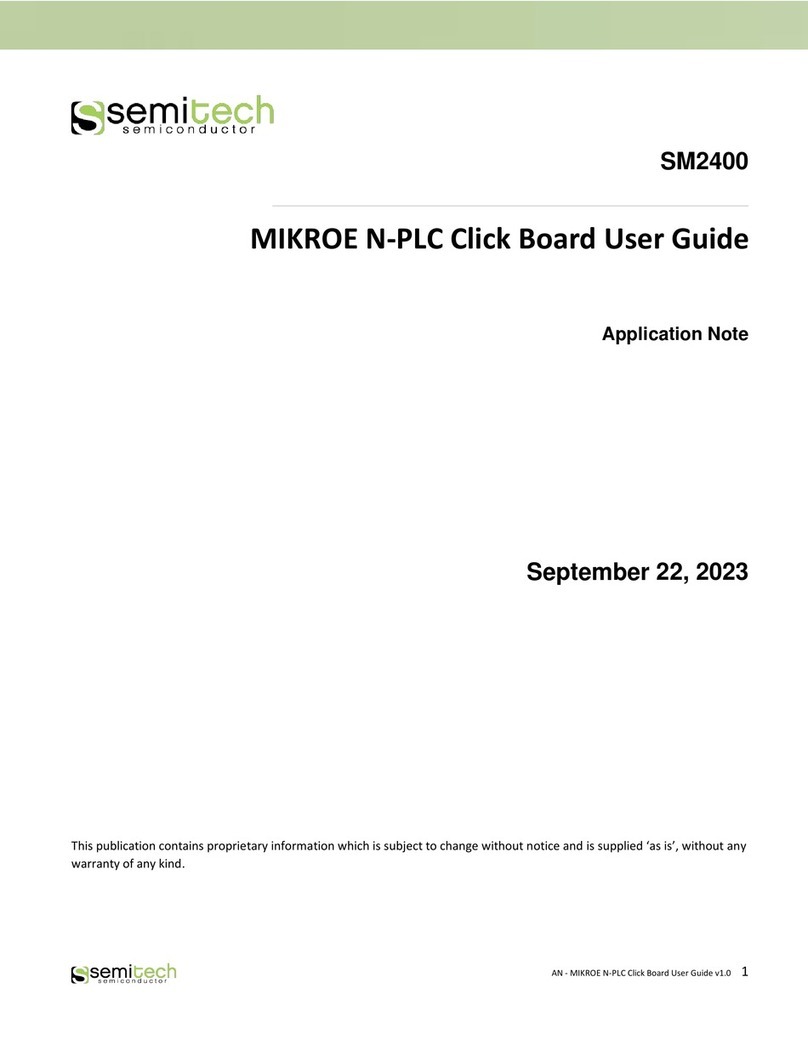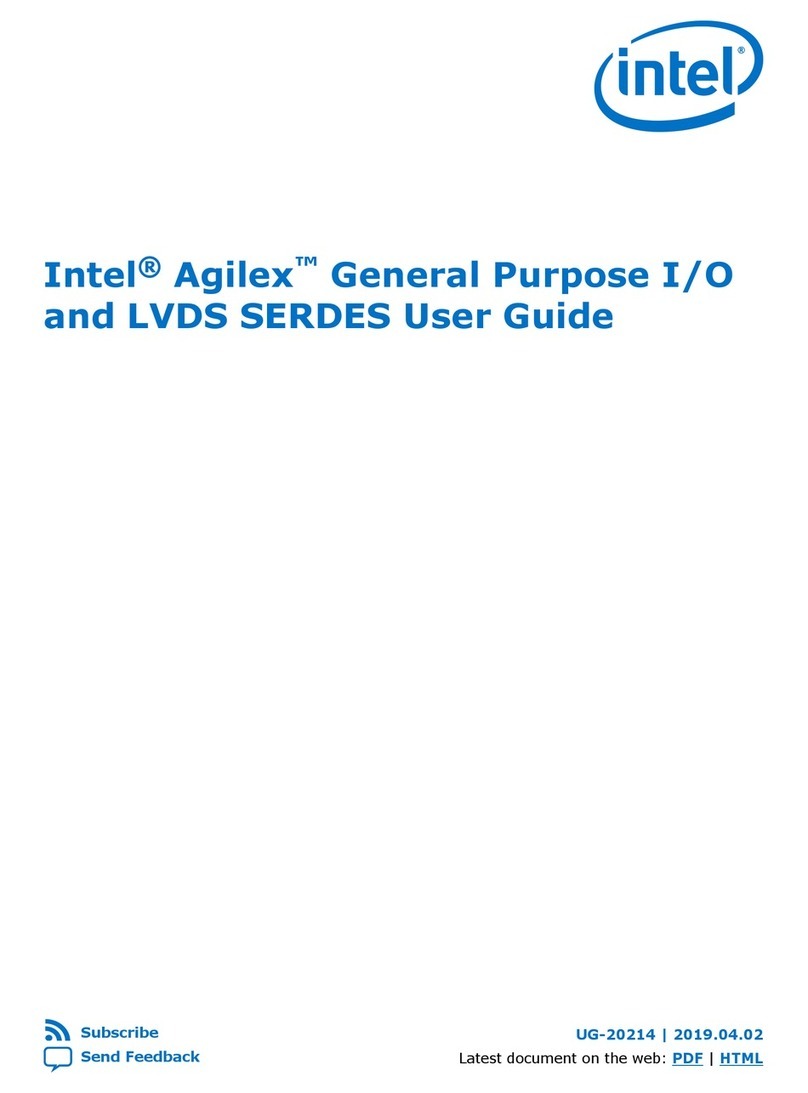
PRELIMINARY
2 Schematic Checklist
Crystal
The circuit for the crystal is shown in Figure 5. Note that the accuracy of the selected crystal should be within
±10 ppm.
Please add a series component (resistor or inductor, see R4 in Figure 5) on the XTAL_P clock trace. Initially, it is
suggested to use an inductor of 24 nH to reduce the impact of high-frequency crystal harmonics on RF
performance, and the value should be adjusted after an overall test.
The initial values of external capacitors C1 and C4 can be determined according to the formula:
CL=C1×C4
C1 + C4+Cstray
where the value of CL(load capacitance) can be found in the crystal’s datasheet, and the value of Cstray refers to
the PCB’s stray capacitance. The values of C1 and C4 need to be further adjusted after an overall test as
below:
1. Select TX tone mode using the Certification and Test Tool.
2. Observe the 2.4 GHz signals with a radio communication analyzer or a spectrum analyzer and demodulate
it to obtain the actual frequency offset.
3. Adjust the frequency offset to be within ±10 ppm (recommended) by adjusting the external load
capacitance.
• When the center frequency offset is positive, it means that the equivalent load capacitance is small,
and the external load capacitance needs to be increased.
• When the center frequency offset is negative, it means the equivalent load capacitance is large, and
the external load capacitance needs to be reduced.
• External load capacitance at the two sides are usually equal, but in special cases, they may have
slightly different values.
5
5
4
4
3
3
2
2
1
1
D D
C C
B B
A A
The values of C11, L2 and C12
vary with the actual PCB board.
The values of C1 and C4 vary with
the selection of the crystal.
The value of R4 varies with the
actual PCB board. R4 could be a
resistor or inductor, the initial
value is suggested to be 24 nH.
CHIP_EN:
H Activate chip;
L Disable chip.
This pin could not be float.
When VBAT is powered by external
battery, R2 can be NC.
RF_ANT LNA_IN GPIO27
GPIO0
GPIO2
GPIO3
GPIO1
GPIO4
GPIO5
VBAT
GPIO8
GPIO9
GPIO10
GPIO11
GPIO12
GPIO13
U0RXD
U0TXD
GPIO25
GPIO26
GPIO22
EN
GPIO14
GND
VDD33
GNDGNDGND
GND
GNDGND
GND
GND
GNDGND
GND
GND
VDD33
GND
GND
VDD33
VDD33
GND
VDD33
GND
VDD33
C2
10nF C5
1uF
C7
1uF
C10
0.1uF
C13
0.1uF
C6
10uF
L2 TBD
C1
TBD
R3 499
Y1
32MHz(±10ppm)
XIN
1
GND
2XOUT 3
GND 4
C19
0.1uF
ANT1
PCB_ANT
1
2
U1 ESP32-H2
VDD3P3
1
VDD3P3
2
GPIO0
3
GPIO1
4
MTMS
5
MTDO
6
MTCK
7
MTDI
8
GPIO8
10
GPIO9
11
GPIO10
12
GPIO11
13
GPIO12
14
XTAL_32K_P
15
XTAL_32K_N
16 GPIO26 25
GPIO27 26
VDD3P3 27
XTAL_N 28
XTAL_P 29
VDD3P3 30
VDD3P3 31
ANT 32
GND 33
VDDPST1
9
GPIO25 24
U0TXD 23
U0RXD 22
GPIO22 21
VDDPST2 20
VDDA_PMU 19
VBAT 18
CHIP_EN 17
C17
0.1uF
C12
TBD
R2 0
C8
0.1uF
C4
TBD
R4 TBD
C11
TBD
Figure 5: Schematic for the Crystal
Notice:
• Defects in the manufacturing of crystal (for example, large frequency deviation of more than ±10 ppm, unstable
performance within operating temperature range, etc) may lead to the malfunction of ESP32-H2, resulting in a
decrease of the RF performance.
• It is recommended that the amplitude of the crystal is greater than 500 mV.
Espressif Systems 10
Submit Documentation Feedback
ESP32-H2 Series Hardware Design Guidelines v0.5
